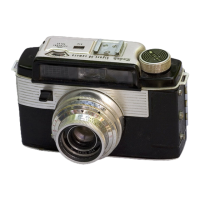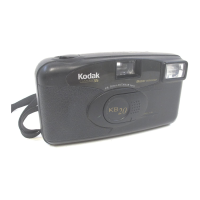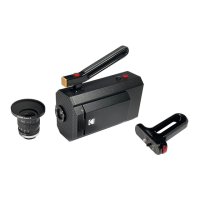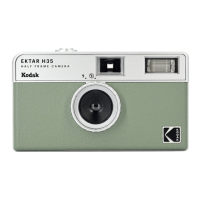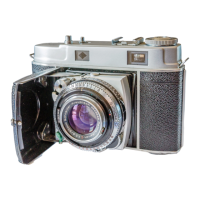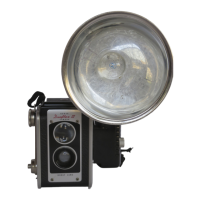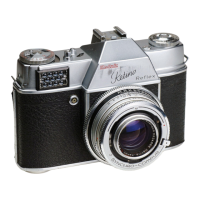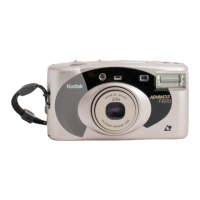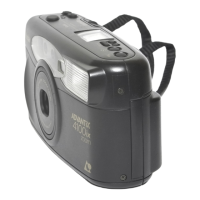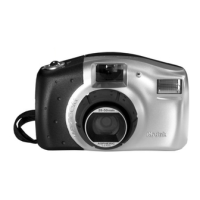rounding plate, indicates
when
the
shutter
is CLOSED and OPEN.
To move the film forward, push
in
and
lock
the EXPOSURE BUT-
TON,
Fig. 46, page 49, then turn the crank
in
the direction
of
arrow
F;
arrow
R (reverse) indicates the direction for winding
th
e film backward.
It
is impossible to turn the
ONE-FRAME
SHAFT backward
if
the
spring
of
the
motor
is fully wound,
in
such case run down
the
motor
as
described on page
54
.
The ONE-FRAME
SHAFT (Fig. 46, page 49) enables the oper
ato
r to
prolong the exposure given each frame. This feature is valuable
both
for animated and still life subjects
in
very poor
light.
This shaft is also useful in special multiple exposure
work
which
re-
quires winding
the
film
fo
rwar
d or back a definite number
of
frames.
The FRAME
COUNTER, described below,
will
be
useful
when
exposures are made
with
the SINGLE
FRAME
RELEASE and
the
ONE
-
FRAME
SHAFT
as
it
gives
the
exact number
of
individual frames
exposed.
FRAME
COUNTER
THE
individual
FRAME
COUNTER is a dial, graduated
to
indicate
frames or individual pictures, from
0
to
40
(see Figure
47
).
One revolu-
tion
of
the dial indicates
that
one
foot
of
film has passed
throu
gh the
gate.
At
the figure 0 there is an extended index line. By
watching
for
FRAME
the appearance
of
this line
while
the
COUNTER Cine-Kodak
is
running, an accurate
count can
be
made of the number
of
feet
run
or
rewound.
Further,
the
graduations for individual frames
will
be
found useful
in
single frame,
double, and multiple exposure work.
Since
the
dial repeats after every
forty frames,
it
may often be neces-
sary
to
use
it
in conjunction
with
the
CAMERA
FILM
METER
which
is
located on the top
of
the
Cine-Kodak.
To adjust the
two
dials for the
greatest convenience
in
making
read-
Fig.
47
ings, proceed
as
follows:
50
